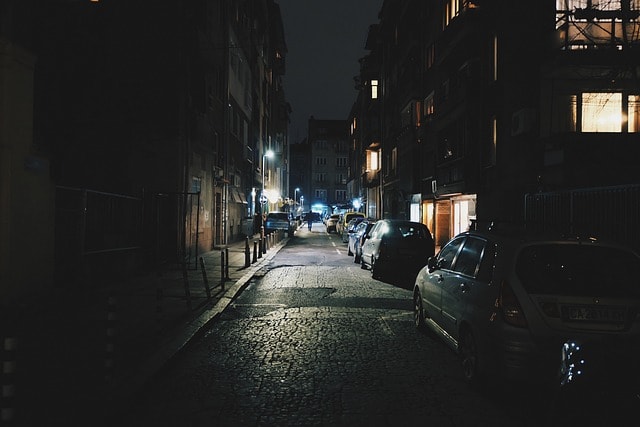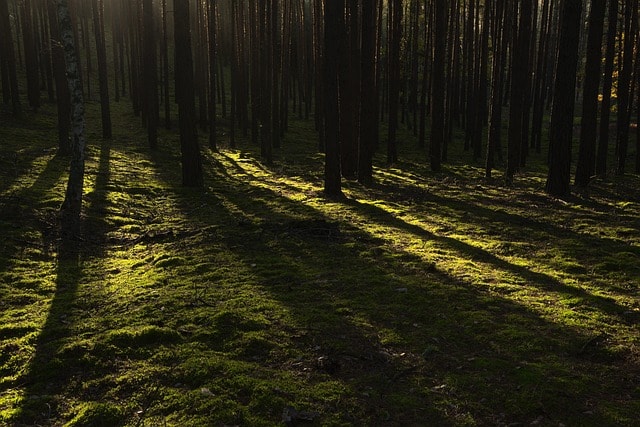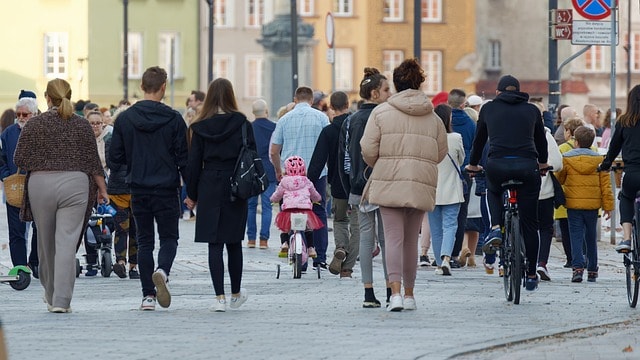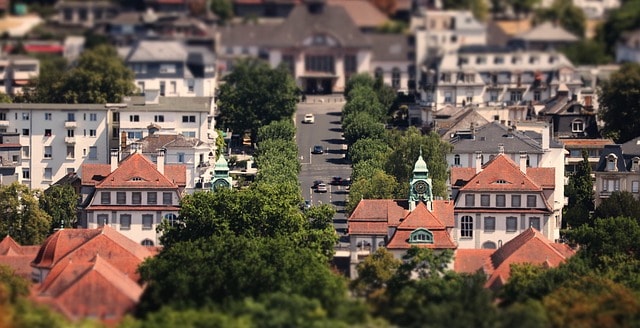Places to avoid in Ireland include overly crowded tourist spots and remote rural regions with limited access. You should avoid neighborhoods in Dublin with higher crime rates, such as certain parts of the Northside, as well as overly commercialized tourist destinations that can detract from an authentic experience. Additionally, be cautious in remote rural areas that may not be as welcoming or accessible to tourists.
It's also important to be mindful of local customs and avoid places that are not accommodating to tourists. Some rural areas in Ireland are less accessible or welcoming to outsiders, especially if you are not familiar with the local culture or language. By knowing which places to avoid, you can focus on exploring the best that Ireland has to offer, from its breathtaking landscapes to its rich cultural heritage.

Urban Places to Avoid in Ireland for Safety Reasons
Ireland is generally a safe country, but like any other place, it has areas that are best avoided, particularly in urban settings. These locations may have higher crime rates or be less welcoming to tourists, making them potentially unsafe for visitors. Below are some urban areas in Ireland where extra caution is advised.
Certain Parts of Dublin's Northside
Dublin's Northside, particularly areas such as Ballymun and Darndale, has a reputation for higher crime rates. These neighborhoods have been associated with issues such as drug-related crime and anti-social behavior. While the situation has improved in recent years, it is still advisable for tourists to be cautious and remain vigilant when visiting these areas, especially at night.
Limerick’s Moyross and Southill
Limerick, known for its historical and cultural significance, has some areas where safety can be a concern. Moyross and Southill are two neighborhoods that have experienced social and economic challenges, leading to higher crime rates. These areas are undergoing regeneration, but it is still wise to avoid them, particularly if you are unfamiliar with the city.
Cork’s Knocknaheeny
Knocknaheeny in Cork is another urban area that has faced challenges related to crime and social issues. Although Cork is generally a safe city, Knocknaheeny has been identified as a neighborhood with a higher incidence of crime statistics and of anti-social behavior. Visitors should exercise caution when in this area and consider staying in more central, well-traveled parts of the city.
West Tallaght in Dublin
West Tallaght, another area in Dublin, is known for its social housing estates and has had a history of crime and gang-related activities. While not all parts of Tallaght are unsafe, it is advisable to avoid the west side of this suburb, especially after dark. Stick to more popular and safer areas if you are exploring this part of Dublin.
Blanchardstown in Dublin
Blanchardstown, a suburb in the western part of Dublin, is a large residential area that has seen an increase in crime rates in certain parts. Issues such as crimes such as burglary and anti-social behavior have been reported, making it another area where tourists should be vigilant. If you are visiting Blanchardstown, it’s best to stay in well-populated and commercial areas.
Being aware of these urban areas in Ireland can help you plan a safer and more enjoyable visit. While these places may not be completely off-limits, understanding the potential risks allows you to take necessary precautions.

Remote Places to Avoid in Ireland
Ireland's remote locations are often beautiful and serene, but some are not easily accessible or safe for tourists. These areas lack infrastructure, emergency services, or pose risks due to natural conditions.
Slieve Bloom Mountains
The Slieve Bloom Mountains are a remote area that attracts adventurers looking for a challenge. However, the terrain can be treacherous, especially in bad weather. The lack of nearby services and difficult navigation make it a potentially dangerous area for those unfamiliar with the landscape. It's essential to be well-prepared and to consider going with a guide if you choose to explore this area.
The Boglands of Connemara
Connemara is renowned for its beauty, but the boglands can be hazardous. These wet, spongy areas can be tricky to navigate and are prone to sudden changes in weather. Visitors who are not familiar with the terrain may find themselves in difficult situations, particularly if they venture too far from marked paths. It's advisable to stick to more accessible areas or go with someone who knows the region well.
Mweelrea Mountain
Mweelrea is the highest mountain in Connacht and offers spectacular views, but it is also one of the most challenging climbs in Ireland. The weather can change rapidly, and the paths are not well-marked, making it easy to get lost. This is not a hike for the inexperienced or those without proper equipment. If you're determined to climb Mweelrea, consider hiring a guide and ensuring you're fully prepared for the conditions.

Overcrowded Tourist Places to Avoid in Ireland
Ireland is a country rich in history, culture, and natural beauty, attracting millions of tourists each year. However, some popular destinations can become overwhelmingly crowded, detracting from the authentic experience and making your visit less enjoyable. Below are some of the most overcrowded tourist spots in Ireland that you want to avoid, along with alternative recommendations to enhance your trip.
1. The Cliffs of Moher
The Cliffs of Moher are one of Ireland’s most famous natural attractions, drawing visitors from all over the world. Located on the west coast, these dramatic cliffs rise over 700 feet above the Atlantic Ocean, offering breathtaking views. However, the popularity of the Cliffs of Moher means that they are often overcrowded, especially during peak tourist season in the summer months.
The large number of visitors can make the experience less enjoyable, as you may find yourself jostling for space on narrow pathways or waiting in long lines to take photos. Additionally, the sheer volume of tourists can make it difficult to fully appreciate the natural beauty and tranquility of the area.
What is an Alternative Recommendation to the Cliffs of Moher?
If you’re looking for a similar experience without the crowds, consider visiting the Slieve League Cliffs in County Donegal. These cliffs are even higher than the Cliffs of Moher, and while they are still popular, they tend to be less crowded, offering a more peaceful and immersive experience.
2. The Guinness Storehouse
The Guinness Storehouse in Dublin is another must-see attraction that often becomes overcrowded. As the most visited attraction in Ireland, it offers a fascinating look into the history and production of Ireland’s most famous beer. The experience culminates in a visit to the Gravity Bar, where you can enjoy a pint of Guinness with panoramic views of Dublin.
However, the popularity of the Guinness Storehouse means that it can be incredibly busy, particularly during weekends and holidays. The large crowds can make it difficult to fully enjoy the exhibits, and the Gravity Bar can become so packed that finding a seat or even getting to the bar can be a challenge.
What is an Alternative Recommendation to the Guinness Storehouse?
For a similar but less crowded experience, consider visiting the Smithwick’s Experience in Kilkenny. This brewery tour offers insights into the history and brewing process of another of Ireland’s iconic beers, and it typically attracts fewer tourists than the Guinness Storehouse. Plus, Kilkenny is a charming city with plenty of other attractions to explore.
3. Blarney Castle and the Blarney Stone
Blarney Castle, home to the famous Blarney Stone, is one of Ireland’s most iconic tourist attractions. According to legend, kissing the Blarney Stone will grant you the gift of eloquence, which draws thousands of visitors each year. However, the popularity of this site means that it can become extremely crowded, especially during peak season.
Visitors often find themselves waiting in long lines to reach the stone, and the experience can feel rushed due to the sheer number of people trying to kiss it. Additionally, the grounds and gardens of Blarney Castle can become quite crowded, making it difficult to enjoy the peaceful surroundings.
What is an Alternative Recommendation to Blarney Castle and the Blarney Stone?
If you’re interested in exploring historic sites without the crowds, the Rock of Cashel in County Tipperary is an excellent alternative. This ancient site features impressive medieval architecture and offers stunning views of the surrounding countryside. While it is a popular destination, it tends to be less crowded than Blarney Castle, allowing for a more relaxed visit.
4. The Ring of Kerry
The Ring of Kerry is a 179-kilometer-long scenic drive that takes you through some of Ireland’s most beautiful landscapes, including rugged coastlines, charming villages, and lush green countryside. However, its popularity means that it can become heavily congested with tourist traffic, especially during the summer months.
The narrow roads can be difficult to navigate when crowded with tour buses and cars, and the numerous stops along the way can become overwhelmed with visitors. This can make the experience feel more like a chore than an enjoyable journey through one of Ireland’s most picturesque regions.
What is an Alternative Recommendation to the Ring of Kerry?
For a similarly scenic drive with fewer crowds, consider exploring the Dingle Peninsula. This area offers stunning coastal views, charming villages, and historical sites without the overwhelming tourist traffic. The roads are less congested, and you’ll have more opportunities to stop and explore at your own pace.
5. Temple Bar, Dublin
Temple Bar is Dublin’s most famous cultural quarter, known for its vibrant nightlife, cobblestone streets, and historical significance. It’s a popular destination for both tourists and locals, with a wide range of pubs, restaurants, and cultural institutions. However, Temple Bar’s popularity also makes it one of the most overcrowded areas in Dublin, especially on weekends and evenings.
The narrow streets can become packed with people, making it difficult to navigate or find a place to sit and enjoy a drink. Additionally, the area’s popularity has led to higher prices, and some visitors may find it overly commercialized.
What is an Alternative Recommendation to Temple Bar?
If you’re looking for a more authentic Dublin experience, consider visiting The Liberties, a historic neighborhood just a short walk from Temple Bar. This area has a rich history and is home to traditional pubs and to attractions like the Teeling Whiskey Distillery and the Guinness Storehouse. It’s less crowded than Temple Bar and offers a more genuine glimpse into Dublin’s past and present.
Ireland has much to offer, but some of its most popular tourist destinations can become overcrowded, detracting from the experience. By considering alternative destinations like the Slieve League Cliffs, the Smithwick’s Experience, the Rock of Cashel, the Dingle Peninsula, and The Liberties, you can enjoy Ireland’s beauty and culture without the crowds. These alternatives not only offer a more peaceful experience but also provide a deeper connection to Ireland’s rich heritage and stunning landscapes.
Neighborhoods to Avoid in Major Cities in Ireland
Neighborhoods to avoid in Dublin are Ballymun, Darndale, and West Tallaght. Neighborhoods to avoid in Cork are Knocknaheeny, Mayfield, and Farranree. Neighborhoods to avoid in Limerick are Moyross, Southill, and St. Mary’s Park. Neighborhoods to avoid in Galway are Westside, Ballybane, and Doughiska
Neighborhoods to Avoid in Dublin
Dublin, as the capital of Ireland, is a bustling city filled with history, rich culture, and vibrant neighborhoods. However, like any large city, it has areas where safety can be a concern. The neighborhoods of Ballymun, Darndale, and West Tallaght are places where tourists should exercise caution.
Ballymun
Ballymun, located on the Northside of Dublin, has a history of social challenges. Once known for its high-rise flats, the area has undergone significant redevelopment. Despite these efforts, Ballymun still struggles with issues such as drug-related crime and anti-social behavior. Tourists are advised to be cautious when visiting this area, especially during the evening hours.
Darndale
Darndale is another neighborhood on Dublin's Northside that has a reputation for higher crime rates and gang activity. The area is largely residential, with few attractions for tourists. Visitors are generally advised to avoid Darndale unless they have a specific reason to visit, as the neighborhood can be less welcoming to outsiders.
West Tallaght
West Tallaght, located in the western suburbs of Dublin, is known for its social housing estates and has a history of gang-related activities. While not all parts of Tallaght are unsafe, the western area is best approached with caution, particularly at night. Tourists should focus on exploring more central and well-traveled parts of Dublin.
Neighborhoods to Avoid in Cork
Cork, Ireland’s second-largest city, is known for its charm and cultural heritage. However, certain neighborhoods like Knocknaheeny, Mayfield, and Farranree have faced social challenges that make them less ideal for tourists.
Knocknaheeny
Knocknaheeny, situated on the northside of Cork, is a residential area with a history of social issues, including crime and anti-social behavior. Although efforts have been made to improve the area, Knocknaheeny remains a neighborhood where visitors should be cautious. Tourists are recommended to stick to more central parts of Cork that are well-known for their safety and attractions.
Mayfield
Mayfield, another residential neighborhood in Cork, has experienced similar challenges to Knocknaheeny. The area is not typically frequented by tourists and lacks significant attractions. Visitors unfamiliar with Cork may find Mayfield difficult to navigate, so it’s generally advisable to avoid this area unless necessary.
Farranree
Farranree is a suburb located to the northwest of Cork city center. Like Knocknaheeny and Mayfield, Farranree has faced issues related to crime and anti-social behavior. The area is primarily residential, and there is little for tourists to see or do here. It’s best to focus on exploring Cork’s more central and tourist-friendly neighborhoods.
Neighborhoods to Avoid in Limerick
Limerick, a city rich in history and culture, also has neighborhoods that are best avoided by visitors. Moyross, Southill, and St. Mary’s Park are areas that have struggled with crime and social issues.
Moyross
Moyross is one of Limerick’s largest housing estates, located on the north side of the former city centre. The area has been the focus of various regeneration projects, but issues like drug-related crime and anti-social behavior persist. Tourists should be cautious if visiting Moyross, particularly after dark, and are generally advised to avoid the area.
Southill
Southill, located to the south of Limerick city center, has a similar reputation to Moyross. The neighborhood has faced social challenges, including gang activity and unrest. While Southill is undergoing regeneration, it remains an area where tourists should be vigilant. Visitors are recommended to stay closer to Limerick’s city center, where attractions are more concentrated and safety is less of a concern.
St. Mary’s Park
St. Mary’s Park is a residential area located near the River Shannon in Limerick. The neighborhood has been associated with crime and social issues, making it less desirable for tourists. Although it is located close to some of Limerick’s historical sites, visitors are advised to avoid wandering into St. Mary’s Park, especially after dark.
Neighborhoods to Avoid in Galway
Galway is known for its lively arts scene and welcoming atmosphere, but even here, certain neighborhoods such as Westside, Ballybane, and Doughiska are best approached with caution.
Westside
Westside is a residential area located to the west of Galway city center. The neighborhood has seen issues related to anti-social behavior and petty crime, particularly in some of the housing estates. Tourists should be cautious when visiting Westside, especially during evening hours, and may find it safer to explore other parts of Galway.
Ballybane
Ballybane, located on the east side of Galway, is another area where visitors might want to be more vigilant. The neighborhood has faced challenges related to crime and social issues, making it less inviting for tourists. Ballybane is primarily residential, with limited attractions, so it’s generally better to avoid this area.
Doughiska
Doughiska is a suburb on the eastern edge of Galway, known for its rapid development and diverse population. Despite its growth, Doughiska has experienced issues with crime and anti-social behavior. Tourists are advised to be cautious if visiting this area and should consider staying in more central and tourist-friendly parts of Galway.

Most Dangerous Towns in Ireland
Most dangerous towns in Ireland are Limerick, Drogheda, and Dundalk. Limerick is dangerous because it has a history of gang violence and high crime rates, particularly in certain neighborhoods. Drogheda has seen an increase in criminal activities, including drug-related violence, making it a town where caution is advised. Dundalk faces issues with violent crime too, including incidents related to organized crime, making it a town to approach with caution. Here are more details on these dangerous towns.
Drogheda
Drogheda, located north of Dublin, has seen an increase in crime over the past few years, including gang-related violence and drug abuse. While the town has historical significance and some attractions, the recent crime wave might make it less appealing to tourists. If you do visit, it's important to stay in well-populated areas and avoid venturing out alone at night.
Limerick
Limerick has worked hard to overcome its reputation as a rough city, but certain areas still struggle with high crime rates. While busy streets in the city center and historical sites are generally safe, neighborhoods like Moyross and Southill are best avoided. Visitors should stick to tourist-friendly areas and take standard precautions, especially at night.
Dundalk
Dundalk, located near the border with Northern Ireland, has experienced issues with crime and violence, particularly related to gang activity. While there are interesting historical sites in Dundalk, the town's reputation might make it less attractive to tourists. If you decide to visit, ensure you stay in well-traveled areas and avoid any potentially the most dangerous areas or neighborhoods.
FAQs On Places to Avoid in Ireland
Is Ireland generally safe for tourists?
Yes, Ireland is generally safe for tourists, with low crime rates compared to many other countries. However, like any place, there are areas where visitors should exercise caution.
Are there specific areas in Dublin to avoid?
While Dublin is a popular tourist destination, areas like Ballymun, the North Inner City, and parts of the Liberties can be less safe, particularly at night. Stick to well-populated and tourist-friendly areas.
What should I do if I feel unsafe in Ireland?
If you feel unsafe, it's best to stay in well-lit, populated areas, avoid walking alone at night, and contact local authorities if necessary. Ireland has a responsive police force (Gardaí) that can assist in emergencies.
Are there any dangerous towns in Ireland?
Some towns like Drogheda, Limerick, and Dundalk have higher crime rates, but these are generally isolated incidents. Tourists can stay safe by avoiding known trouble spots and taking standard precautions.
How can I ensure a safe trip to Ireland?
Research your destinations, stay in reputable accommodations, avoid known high-crime or dangerous areas beforehand, and keep your belongings secure. It's also helpful to stay informed about local crime stats, news and advice from your accommodation providers.
